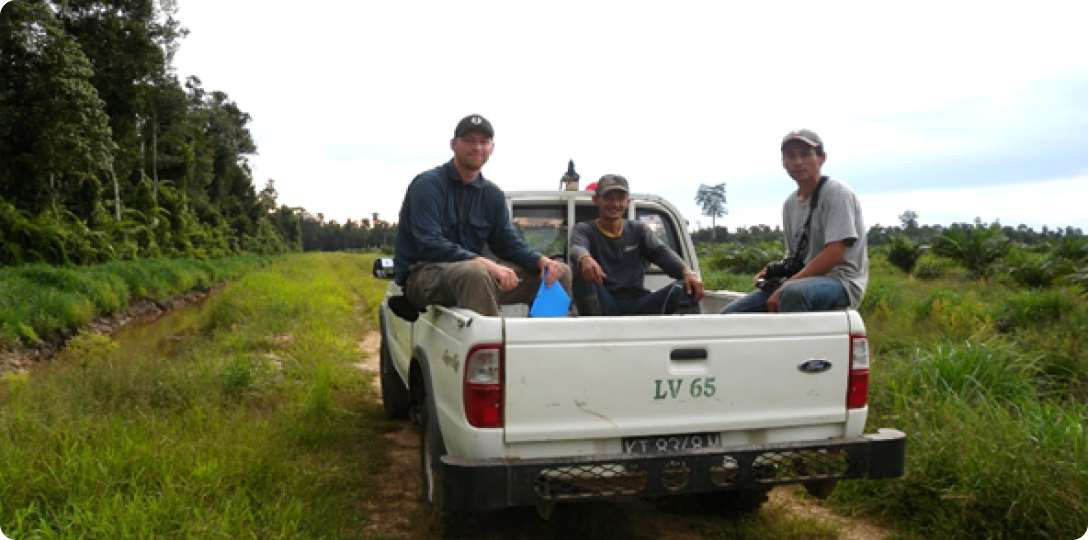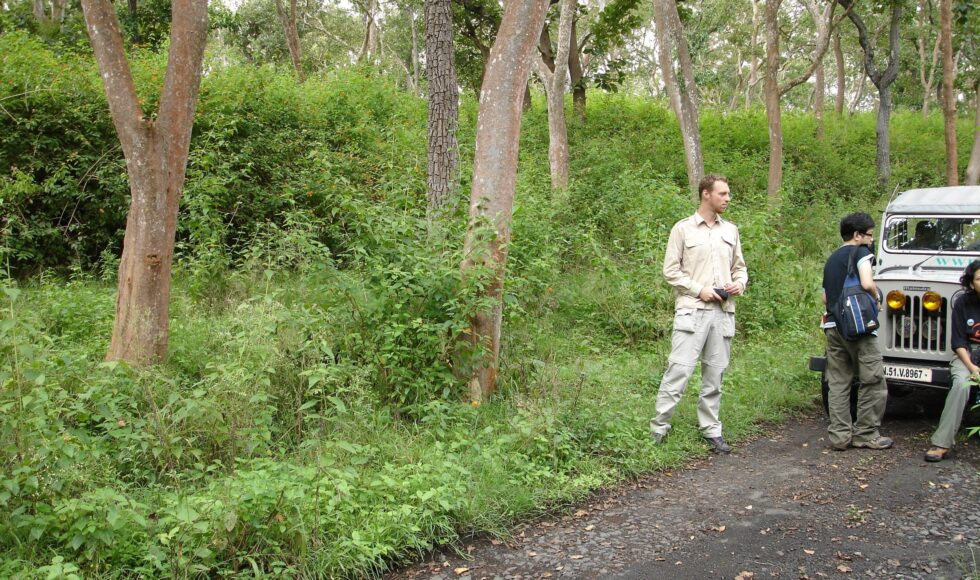Field visit in India in 2006 with WWF
There was a time, not so long ago, when the concept of sustainability within a product’s supply chain needed explaining to people – including the businesses directly involved. Today, the conversation has moved forward.
It’s no longer about what sustainability is, but what action businesses must take to ensure transparency and accountability in their supply chain. That’s where Satelligence comes in.
In this blog post, we share the story behind Satelligence, what we do, why it matters, and how we’re helping to make a difference to global supply chains – and the planet.
22 Years Ago In The Indonesian Jungle
Two decades ago, research students from Wageningen University, Niels Wielaard and Arjen Vrielink took a trip deep into the Indonesian jungle.
Specialising in forestry, and tropical land management respectively, the two men were on a mission to monitor forestry management practices using radar systems.
This fieldwork was designed to calibrate their systems for detecting gaps in the forest canopy and identifying both sustainable and unsustainable forestry management practices. When they arrived to conduct their study, they quickly discovered huge fire-burned landscapes.
Not only that, their research forest was being cut down before their fieldwork had even begun.
It didn’t take long for Niels and Arjen to realise the obvious tension between economic development – especially for local people in need of a livelihood – and the significant negative impact on rich, biodiverse nature.
With their love of technology, the pair soon knew what they wanted to do: find ways to use tech to ensure harmony between forestry and economy.
The seed of Satelligence was sown.
“Inspired by my great grandmother’s stories about her life growing up in Indonesia, I developed a fascination for tropical forest landscapes and its people around the world.
Fresh from Wageningen University I travelled the world for over two decades, to study how new and untapped science & technology designed with humans in mind could halt deforestation and prove sustainable production. Experiencing both the impact of environmental destruction and the hopeful hardships of local people striving to make a decent living made a lasting impression.
It led me to pioneer sustainable sourcing monitoring systems and ultimately launch Satelligence. I have been fortunate to learn from so many people over the years and believe in the power of partnerships driving change to make a meaningful impact.
So I invite you to join too – let’s turn commodity risk into opportunity!”
Niels & Team Satelligence

Succeeding At Sustainability
Fast-forward to the present day. Environmental campaigners are using satellite technology to highlight the extent of global deforestation, and call out those responsible.
The problem? The satellite technology being used is basic, and not always reliable when it comes to providing a true, verifiable picture of deforestation.
This leads to false or unfounded accusations about holes in seemingly sustainable supply chains. Good intentions are being let down by inadequate technology.
Manufacturers and food producers, within supply chains, are constantly having to manage reputational risk. Even when evidence of deforestation is shaky or unsupported, there are still consequences for public relations and brand image. Part of the problem is poor visibility over the supply chain, and inadequate oversight of remote geographic locations.
Companies and campaigners both need independent and unbiased real-time data to call out and eliminate unsustainable deforestation. But how do they get verifiable visibility at all times?
Satelligence technology can be your eyes on the ground. Using both radar and optical satellites, our technology facilitates real-time data monitoring. With a simple and clear overview, it’s easy to identify the most critical issues in a supply chain, and initiate the appropriate action.
At the same time, the data provides peace of mind and validation for businesses who are getting it right. But supply chains are complex, and it can be challenging to ensure traceability and measure progress.

Field visit in Indonesia in 2014
Towards Deforestation-Free Products
Combining radar and optical satellite sources with the latest remote sensing and predictive modelling technology, Satelligence gives businesses, NGOs, and governments the tools they need to make measurable progress toward net-zero deforestation.
There is a whole series of drivers behind the movement for deforestation-free products. Consumer preference is an obvious one. Ethically-sourced and environmentally friendly products are fast becoming an expectation. They’re also important for investors with sustainable portfolios looking for traceability and accountability.
In regions such as the EU, there are regulatory changes on the horizon which would place due diligence obligations on operators involved with certain commodities.
It goes without saying that the move towards deforestation-free products has significant ecological value. Biodiverse and fragile ecosystems – as well as the entire planet – stand to gain from the sustainable management of forests.
Get in touch to discover how we can provide complete transparency and insight into sustainable and unsustainable forestry management within your supply chain.

Field visit in Vietnam in 2016
